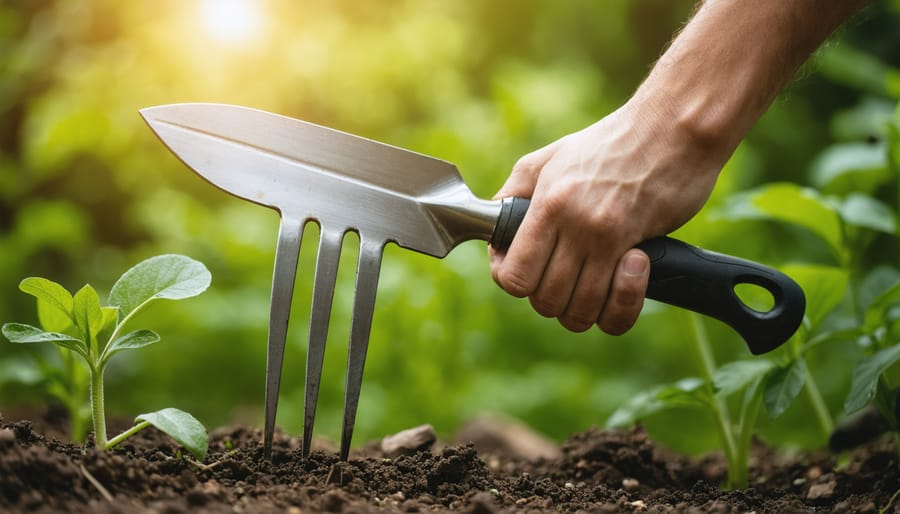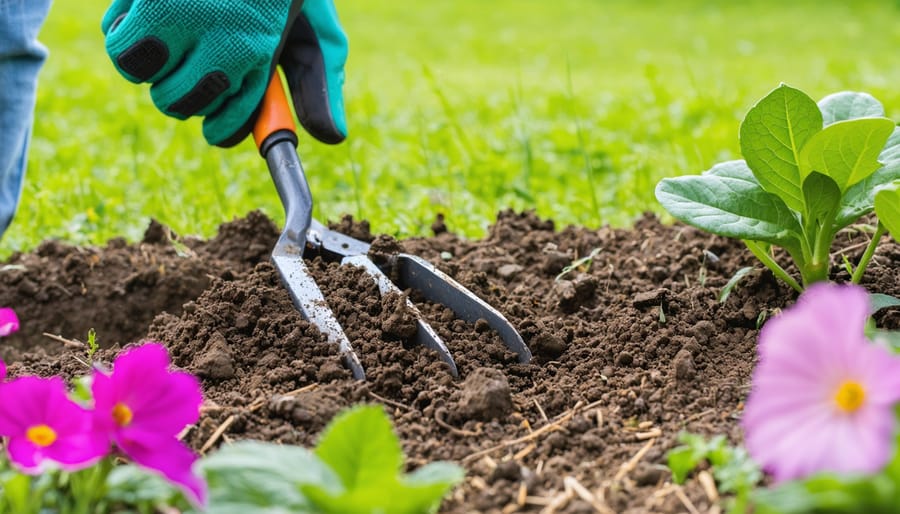Transform your traditional greenhouse into a high-tech growing sanctuary by integrating smart plant growth technology that monitors, adjusts, and optimizes growing conditions automatically. Modern greenhouse technology has revolutionized the way we nurture plants, combining centuries-old growing wisdom with cutting-edge automation and precision control.
Today’s technology greenhouses leverage sensors, automated climate controls, and mobile apps to maintain perfect growing conditions while reducing water consumption by up to 70% compared to traditional methods. Whether you’re a hobby gardener or small-scale producer, these innovations make it possible to grow year-round while spending less time on manual monitoring and maintenance.
Imagine walking into your greenhouse and checking real-time temperature, humidity, and soil moisture data right from your phone, or having your ventilation system automatically adjust based on weather conditions. This isn’t science fiction – it’s the new reality of modern greenhouse gardening, and it’s more accessible than ever for home gardeners ready to take their growing space into the future.
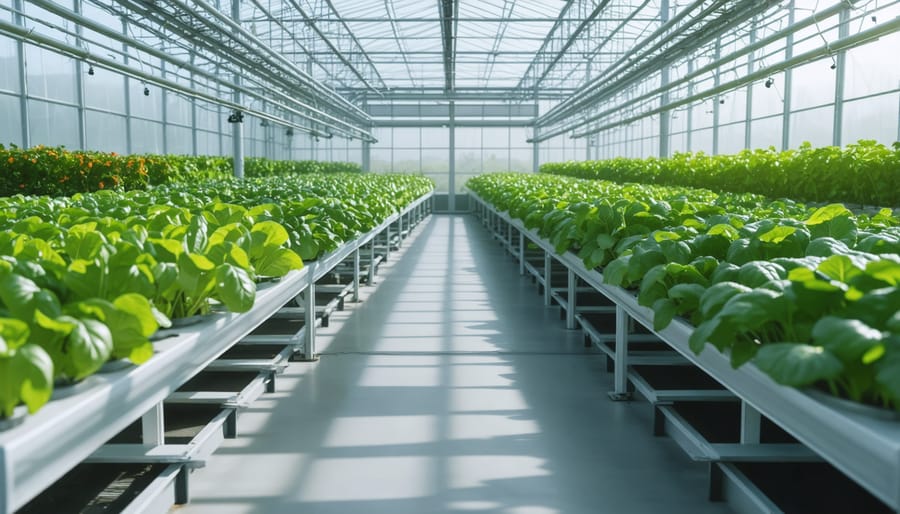
Essential Tech Components for Your Smart Greenhouse
Climate Control Systems
Modern automated growing systems have revolutionized greenhouse climate control, making it easier than ever to maintain optimal growing conditions. Temperature sensors work in harmony with smart heating and cooling systems to keep your plants in their comfort zone, automatically adjusting throughout the day and night.
Humidity control is equally important, with integrated systems monitoring moisture levels and activating dehumidifiers or misters as needed. Many gardeners find that maintaining proper humidity levels becomes effortless once these systems are in place. Smart ventilation fans respond to both temperature and humidity readings, ensuring proper air circulation while helping prevent common greenhouse issues like fungal growth.
The beauty of modern climate control lies in its connectivity. You can monitor and adjust settings through your smartphone, receiving alerts if conditions fall outside your specified ranges. Some systems even integrate weather forecasts to anticipate and prepare for upcoming weather changes, adjusting greenhouse conditions proactively.
These technological advances mean you can maintain ideal growing conditions with minimal hands-on adjustment, giving you more time to focus on other aspects of plant care.
Automated Irrigation Solutions
Modern greenhouse technology has revolutionized the way we water our plants, making it easier than ever to maintain optimal moisture levels. Automated irrigation systems use smart sensors to monitor soil moisture, temperature, and humidity, delivering water precisely when and where your plants need it.
These systems typically include moisture sensors placed throughout your greenhouse, connected to a central control unit that manages water flow through drip lines or sprinklers. When sensors detect dry soil, they trigger the irrigation system automatically, ensuring your plants never experience drought stress or overwatering.
Many systems now offer smartphone connectivity, allowing you to monitor and adjust watering schedules from anywhere. You can set different zones for plants with varying water needs, and some advanced systems even factor in weather forecasts to optimize watering schedules.
The benefits are substantial: water conservation through precise application, reduced plant disease from improper watering, and significant time savings. Plus, consistent moisture levels lead to healthier plants and better yields. For greenhouse gardeners who travel or maintain busy schedules, automated irrigation provides invaluable peace of mind.
Lighting Technology
Modern LED growing lights have revolutionized greenhouse gardening, offering plants the exact light spectrum they need for optimal growth. These energy-efficient lights can be programmed to provide specific wavelengths of light that promote flowering, fruiting, or leafy growth, depending on your plants’ needs. When paired with daylight sensors, they create a perfectly balanced lighting environment throughout the year.
Daylight sensors automatically monitor natural light levels and adjust artificial lighting accordingly, ensuring your plants receive consistent light exposure. This smart technology prevents both over-illumination and light deficiency, while significantly reducing energy costs. Many systems now come with smartphone connectivity, allowing you to monitor and adjust light settings remotely.
The combination of LED lights and sensors helps maintain ideal growing conditions even during shorter winter days or in regions with limited natural sunlight. For best results, position sensors at plant level and arrange LED panels to provide even coverage across your growing space.
Setting Up Your Tech Greenhouse
Planning Your Layout
Thoughtful planning of your technology greenhouse layout is crucial for creating an efficient and productive growing space. Start by mapping out your greenhouse on paper, dividing it into distinct zones based on plant needs and environmental requirements. This will help you determine the optimal placement of sensors and equipment.
Position temperature sensors at both plant level and near the ceiling, as heat stratification can significantly impact growing conditions. Install humidity sensors in areas where moisture control is critical, such as propagation zones or near tropical plants. Consider placing multiple sensors throughout larger greenhouses to ensure accurate readings across all growing areas.
Mount your main control panel in a clean, dry area away from water sources but easily accessible for monitoring and adjustments. When running power cables and sensor wires, keep them elevated and protected from moisture, using proper conduit where necessary. If you’re including automated irrigation, plan your water lines to minimize crossing paths with electrical components.
For optimal air circulation, position fans strategically to create a gentle flow throughout the space. Automated vents should be placed high in the structure to release hot air, while intake vents work best at lower levels. Remember to leave adequate walking space between growing areas for maintenance and harvest activities.
LED grow lights should be mounted with adjustable heights to accommodate different plant growth stages. Consider future expansion when planning your layout – leaving some extra capacity in your systems will save headaches later.
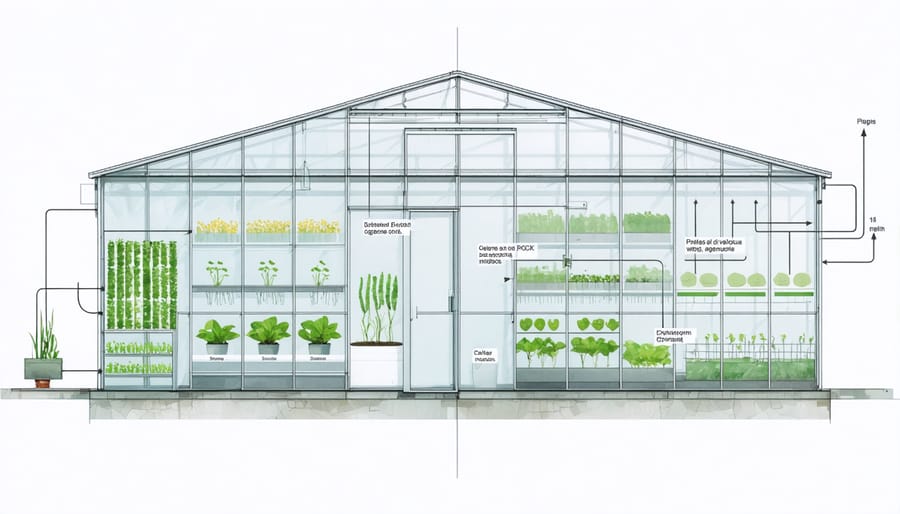
Connecting Your Systems
Creating a truly smart greenhouse means getting all your systems to work together harmoniously. Think of it as conducting an orchestra – each instrument needs to play its part at the right time. Start by establishing a central control hub, which will serve as the brain of your operation. Many gardeners find that smart home systems like Home Assistant or SmartThings work well for this purpose.
Connect your temperature sensors, humidity monitors, and ventilation systems to this central hub. Most modern sensors use WiFi or Bluetooth connectivity, making setup relatively straightforward. Your irrigation system should also link to this network, allowing it to respond to soil moisture readings and weather forecasts automatically.
Don’t forget about power management – consider using a backup battery system to keep essential functions running during outages. Many gardeners also integrate their lighting systems with motion sensors and timers for energy efficiency.
For easier monitoring, set up your smartphone to receive notifications about important changes in your greenhouse conditions. Create automated responses – for example, if temperature rises above a certain threshold, your ventilation system can kick in automatically.
Remember to test each connection thoroughly before relying on it. Start with basic automations and gradually add more complex ones as you become comfortable with the system. This step-by-step approach helps prevent overwhelming yourself while ensuring everything works as intended.
Mobile Monitoring Setup
Today’s greenhouse technology puts control right at your fingertips through your smartphone. With dedicated apps and remote monitoring systems, you can keep tabs on your growing environment from anywhere. Smart garden monitoring has never been more accessible or user-friendly.
Popular greenhouse apps let you track temperature, humidity, and soil moisture in real-time. You’ll receive instant notifications if conditions fall outside your preset ranges, allowing you to respond quickly to potential issues. Many systems even integrate with smart controllers to automatically adjust ventilation, irrigation, and heating systems based on your plants’ needs.
Some of my favorite features include customizable dashboards that display all your greenhouse metrics at a glance, historical data tracking to help you spot patterns, and sharing capabilities that let you connect with other gardeners. You can even set up time-lapse photography to monitor plant growth over time!
Getting started is surprisingly simple. Most systems come with easy-to-follow setup instructions and wireless sensors that connect directly to your home WiFi network. While premium systems offer more features, there are plenty of budget-friendly options that provide essential monitoring capabilities for the hobby gardener.
Remember to choose an app that matches your needs – whether you’re looking for basic temperature alerts or comprehensive growing analytics, there’s a solution out there for every greenhouse enthusiast.
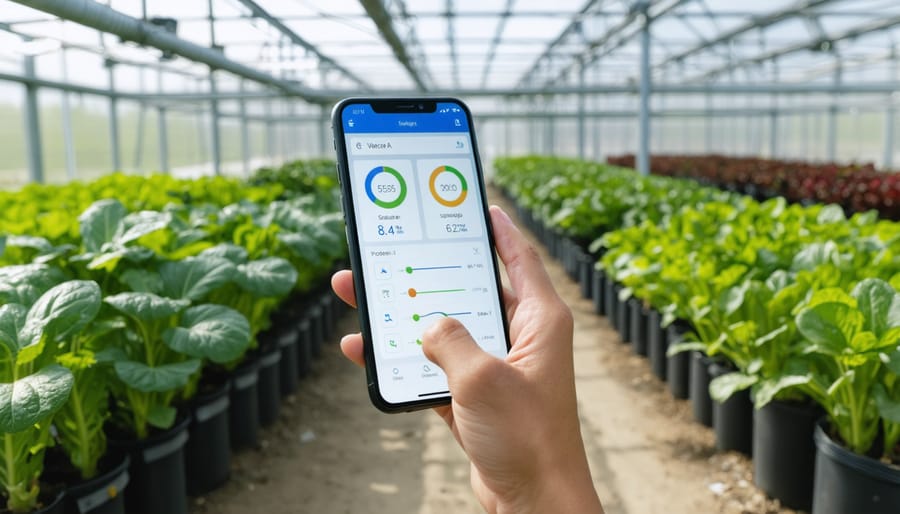
Maintenance and Troubleshooting
Regular System Checks
Keeping your technology greenhouse running smoothly requires a consistent maintenance schedule. Start with daily visual inspections of your automated systems, checking that sensors are clean and unobstructed, and all equipment is functioning correctly. A quick morning walk-through can help you spot potential issues before they become problems.
Weekly checks should include testing your irrigation system’s pressure and cleaning any filters to prevent blockages. Verify that your climate control sensors are accurately reading temperature and humidity levels by comparing them with a manual thermometer and hygrometer. Don’t forget to check ventilation fans for dust buildup and clean them as needed.
Monthly maintenance tasks are more comprehensive. Test your backup power system, calibrate all sensors, and inspect electrical connections for signs of wear or corrosion. Update your automation system’s software if updates are available, and back up your settings and growing schedules.
Every six months, schedule a thorough inspection of all mechanical components. This includes lubricating moving parts, checking motor bearings, and testing emergency systems. Clean solar panels if you have them, and verify that your weather station components are properly aligned and secured.
Keep a digital or physical maintenance log to track when you perform these tasks and note any issues you discover. This record-keeping helps identify patterns and predict when equipment might need replacement, saving you time and money in the long run.
Common Issues and Solutions
Even the most advanced technology greenhouses can encounter issues, but most are easily resolved with the right approach. Here are common problems and their solutions:
Temperature fluctuations often occur due to malfunctioning sensors or connectivity issues. First, check if your sensors are properly calibrated and clean any dirt or debris that might affect readings. If problems persist, try resetting your system or replacing batteries in wireless sensors.
Poor ventilation control is another frequent challenge. When automatic vents aren’t responding correctly, ensure there’s no physical obstruction and that your actuators are properly connected. Regular lubrication of moving parts can prevent many ventilation issues before they start.
Irrigation system failures can be particularly stressful. If your automated watering isn’t working properly, check for clogged filters or blocked irrigation lines. Sometimes, simply cleaning the system’s filters and ensuring proper water pressure can resolve the issue.
Many gardeners experience connectivity problems with their smart controllers. If your system stops responding to your smartphone commands, try updating your app and controller firmware. Sometimes, simply moving your Wi-Fi router closer to the greenhouse or installing a signal booster can make a significant difference.
For lighting system issues, first verify that all connections are secure and bulbs are functioning. LED systems occasionally experience flickering or complete failure due to power supply problems – checking your electrical connections and ensuring proper voltage can often resolve these issues.
Remember, maintaining a log of issues and solutions can help prevent future problems and make troubleshooting easier over time.
Future-Proofing Your Tech Greenhouse
As technology continues to evolve, staying ahead of the curve with your tech greenhouse means being ready to incorporate new innovative gardening technologies as they emerge. Consider leaving extra power outlets and USB ports during initial setup, as well as installing expandable control systems that can accommodate future devices. Many modern greenhouse controllers now offer modular designs, allowing you to add new sensors and automation features as needed.
Cloud connectivity is becoming increasingly important, so ensure your greenhouse’s internet connection is reliable and can handle additional smart devices. Consider installing a mesh Wi-Fi system or signal boosters to maintain strong coverage throughout your growing space. It’s also worth investing in systems with open APIs or universal compatibility, making it easier to integrate new tools and sensors as they become available.
Looking ahead, emerging technologies like AI-powered plant monitoring, advanced LED spectrum control, and even robotics for automated harvesting are on the horizon. By building your tech greenhouse with expansion in mind, you’ll be ready to embrace these innovations when they become accessible to home gardeners.
Don’t forget about sustainable upgrades either. Plan space for future solar panel installations or rainwater collection systems. Some gardeners are even experimenting with vertical farming technologies and hydroponics systems that can be gradually integrated into existing setups.
Remember, the key to future-proofing isn’t about having every new gadget, but rather creating a flexible foundation that can grow with your needs and adapt to new technologies. Start with the basics, but always leave room for tomorrow’s innovations.
Technology greenhouses represent an exciting step forward in modern gardening, combining our love for growing plants with smart solutions that make the process more efficient and enjoyable. By implementing these innovative features, you’ll not only save time and resources but also create an optimal growing environment that can extend your growing season and improve your yields.
Whether you start small with basic automation or dive into a fully connected smart greenhouse, the benefits are clear: precise climate control, reduced water usage, and the ability to monitor your plants from anywhere. Many gardeners who have embraced these technologies report spending less time on routine tasks and more time enjoying their garden’s bounty.
Remember, you don’t need to implement everything at once. Start with the features that address your most pressing needs, whether that’s automated ventilation or smart irrigation. As you become more comfortable with the technology, you can gradually expand your system. The future of gardening is here, and it’s more accessible than ever – why not take that first step toward modernizing your greenhouse today?
Your plants will thank you, and you’ll discover a whole new level of gardening satisfaction.


